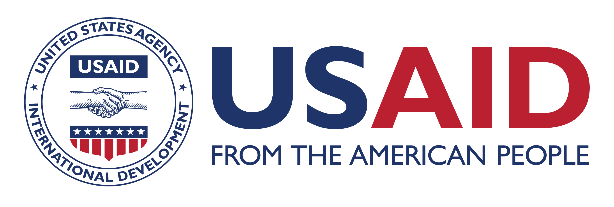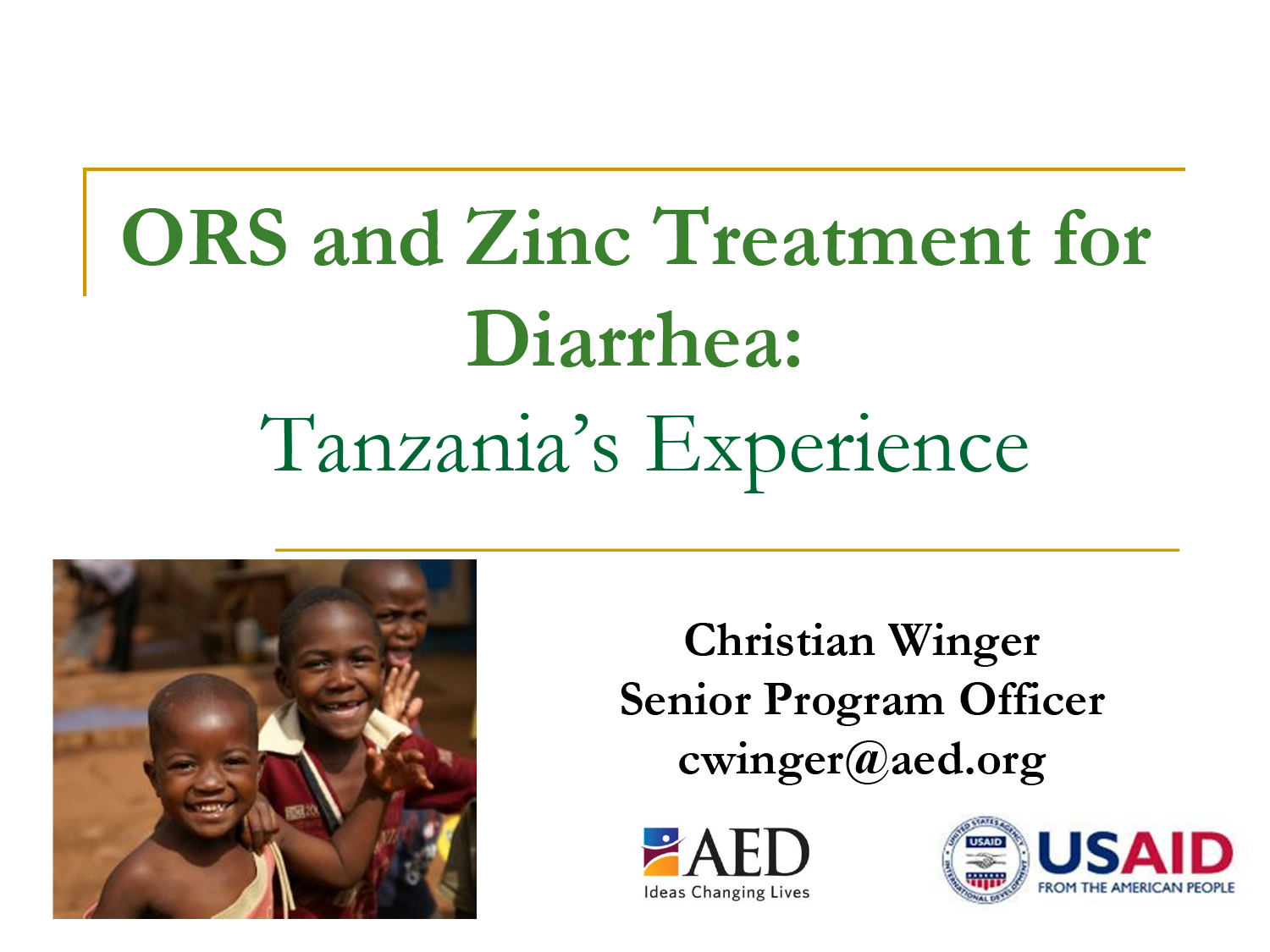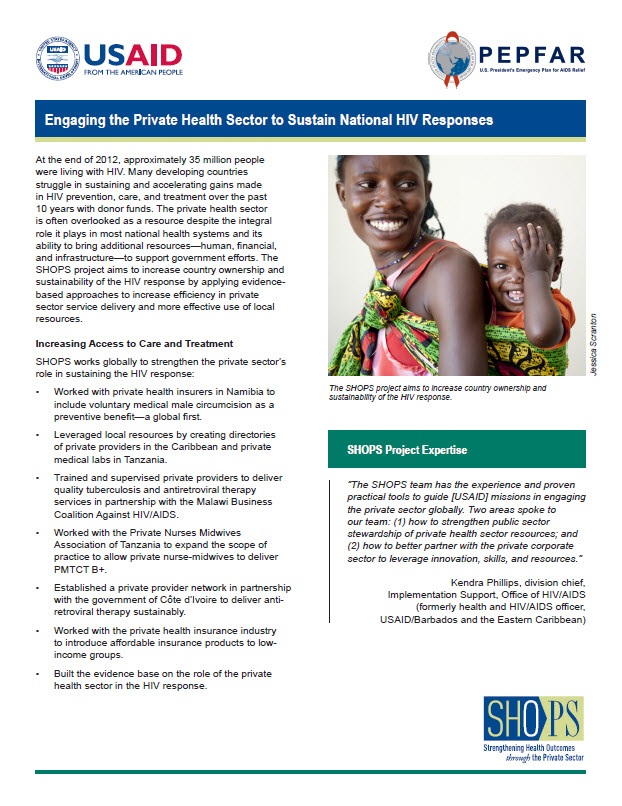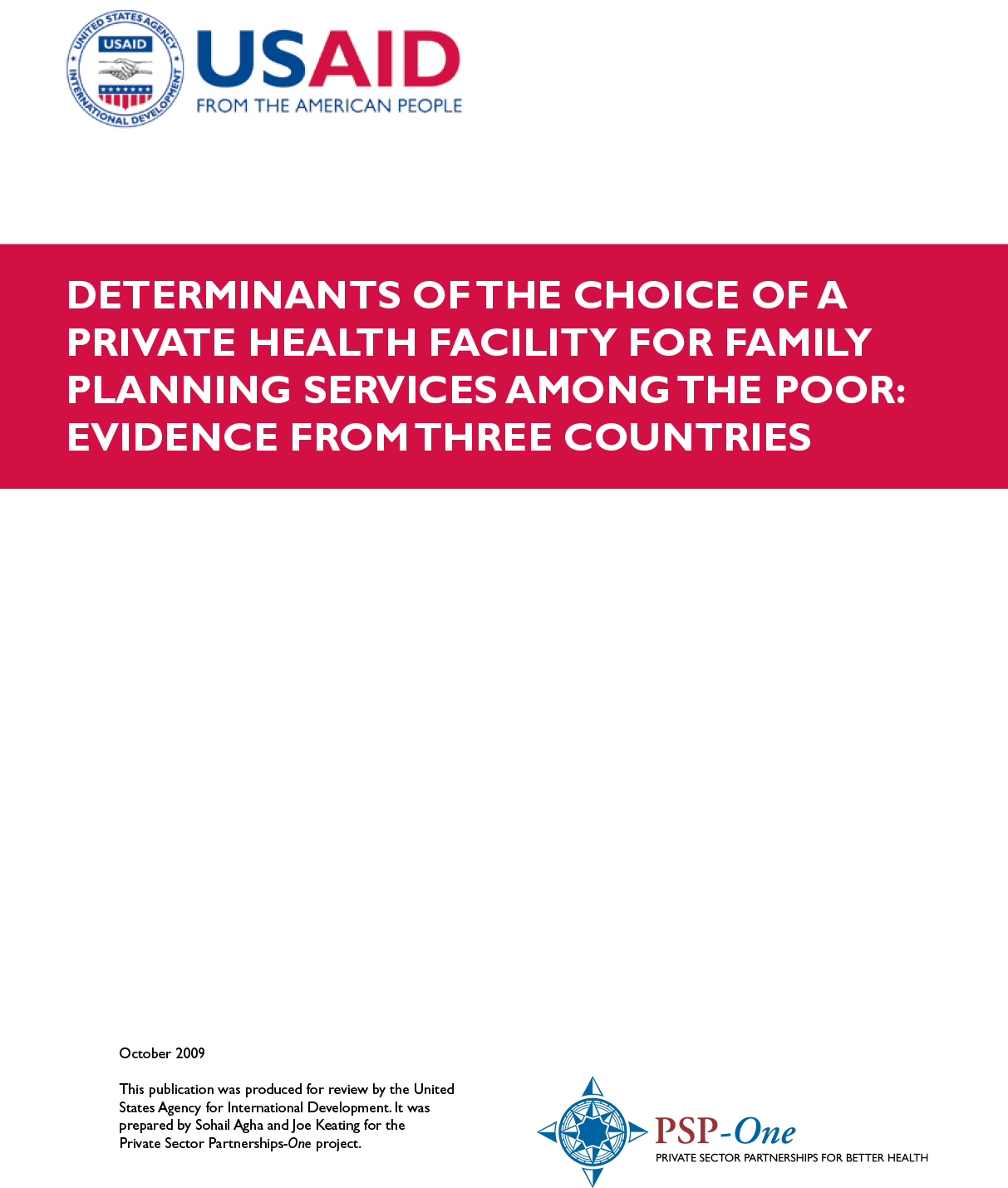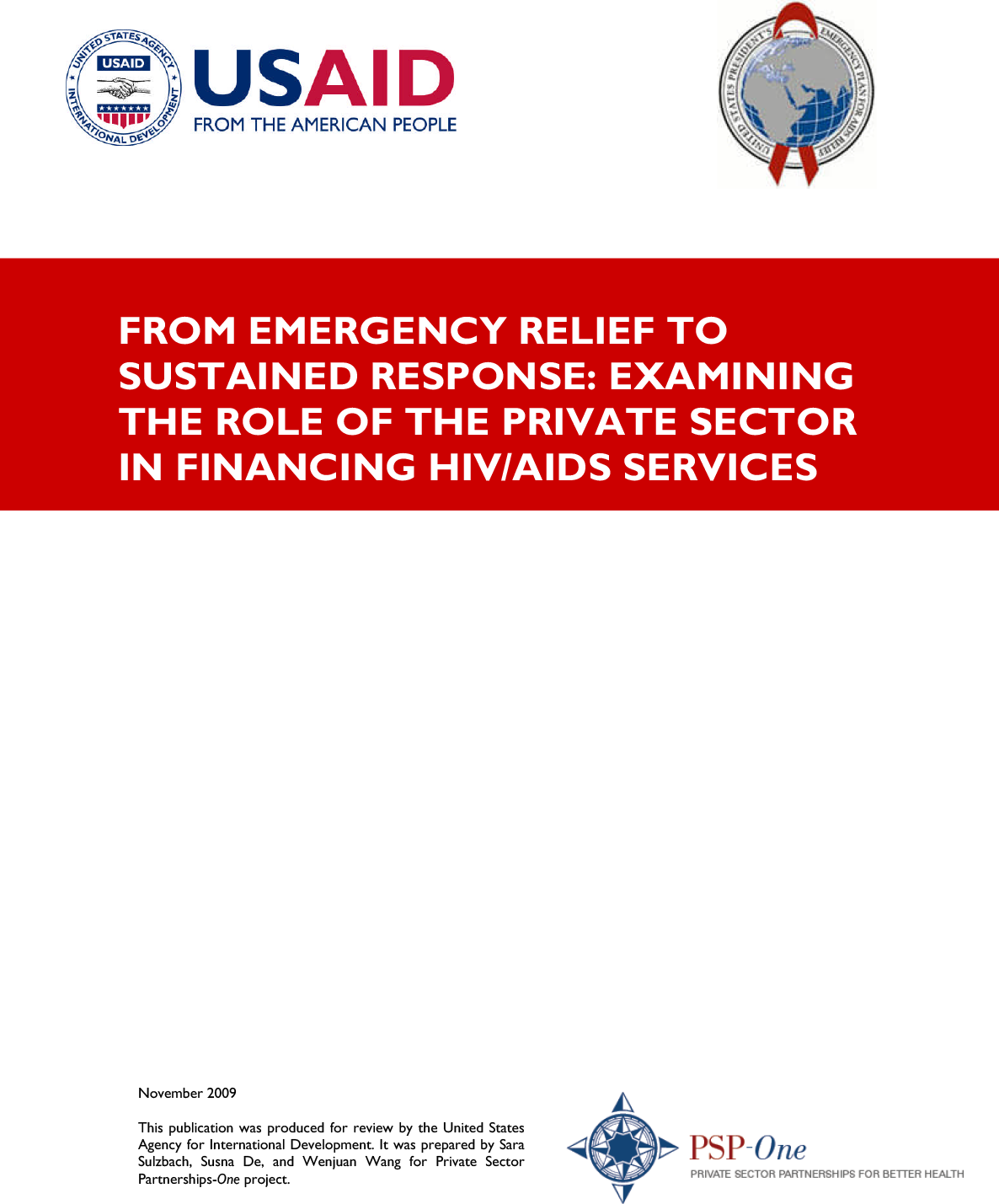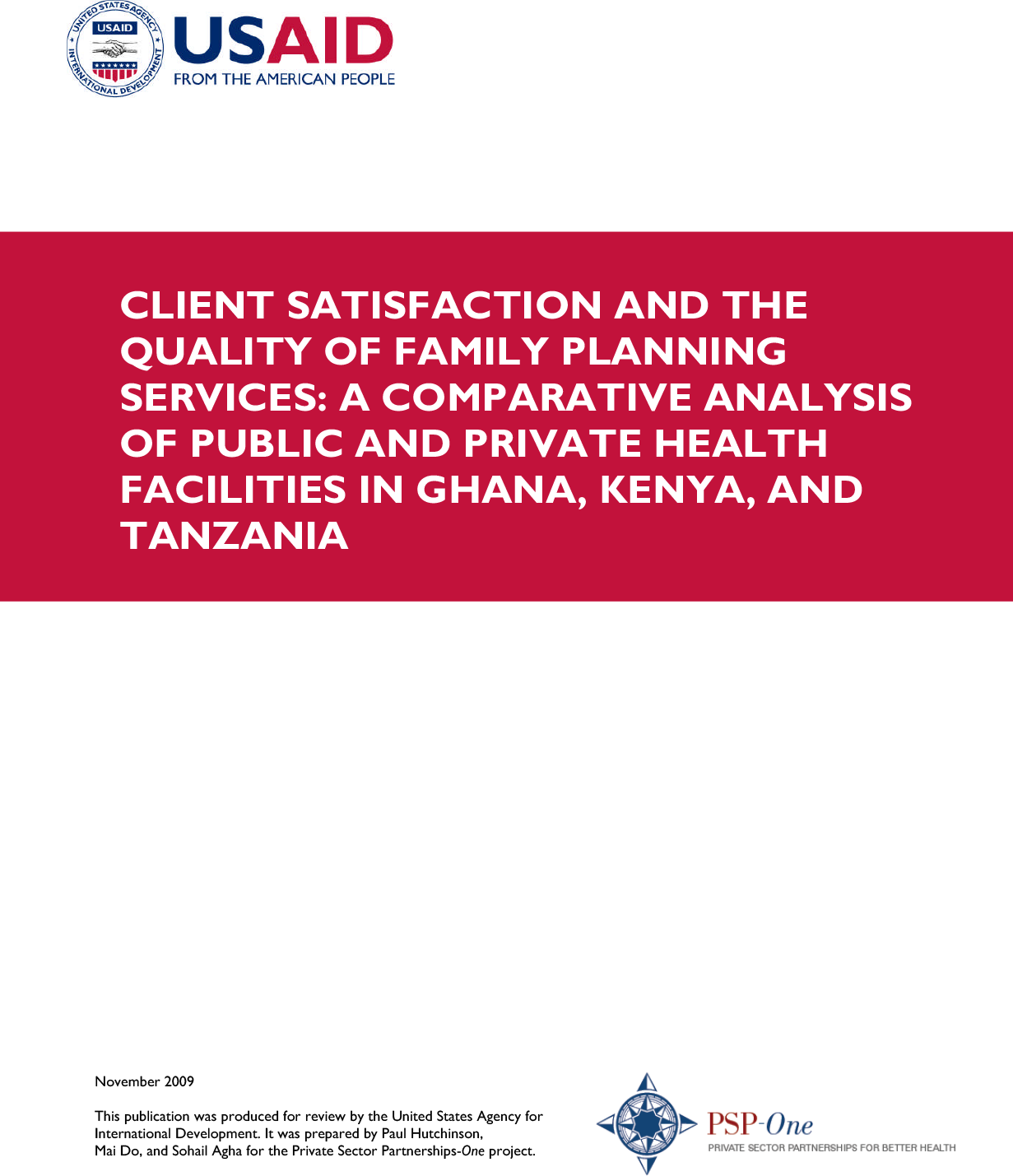
Resource Library

Dr. Samwel Ogillo on Organizing the Private Health Sector in Tanzania
Resource Type : Video
Country : Tanzania
Year : 2012-03-04T12:00:00
Language : English
Project : SHOPS

Resource Library
Samwel Ogillo Interview
Transcript of an interview conducted by Barbara O'Hanlon with Samwel Ogillo, director of the Association of Private Health Facilities in Tanzania. Second in a series of interviews conducted by Network for Africa.
Resource Type : Other
Country :
Year : 2012-01-12T00:00:00
Language : English
Project : SHOPS

Resource Library
The Private Sector Role in HIV/AIDS in the Context of an Expanded Global Response
Global financing for the HIV response has reached unprecedented levels in recent years. Over $10 billion were mobilized in 2007, an effort credited with saving the lives of millions of people living with HIV (PLHIV). A relatively unexamined aspect of the global HIV response is the role of the private sector in financing HIV/AIDS services. As the nature of the response evolves from emergency relief to long-term sustainability, understanding current and potential contributions from the private sector is critical.
This paper examines trends in private sector financing, management and resource consumption related to HIV/AIDS in five sub-Saharan African countries, with a particular emphasis on the effects of recently scaled-up donor funding on private sector contributions. We analyzed National Health Accounts HIV/AIDS subaccount data for Kenya, Malawi, Rwanda, Tanzania and Zambia between 2002 and 2006. HIV subaccounts provide comparable data on the flow of HIV/AIDS funding from source to use.
Findings indicate that private sector contributions decreased in all countries except Tanzania. With regards to managing HIV/AIDS funds, non-governmental organizations are increasingly controlling the largest share of resources relative to other stakeholders, whereas private for-profit entities are managing fewer HIV/AIDS resources since the donor influx. The majority of HIV/AIDS funds were spent in the public sector, although a considerable amount was spent at private facilities, largely fueled by out-of-pocket (OOP) payments. On the whole, OOP spending by PLHIV decreased over the 4-year period, with the exception of Malawi, demonstrating that PLHIV have increased access to free or subsidized HIV/AIDS services. Our findings suggest that the influx of donor funding has led to decreased private contributions for HIV/AIDS. The reduction in private sector investment and engagement raises concerns about the sustainability of HIV/AIDS programs over the long term, particularly in light of current global economic crisis and emerging competing priorities.
This article was published in Health Policy and Planning 2011.
Resource Type : Brief
Country : Kenya, Malawi, Rwanda, Tanzania, Zambia
Year : 2011-10-28T00:00:00
Language : English
Project : SHOPS

Resource Library
ORS and Zinc Treatment for Diarrhea: Tanzania's Experience
Integrating Zinc into Diarrhea Management e-Conference Panel 1 presentation by Christian Walker, Center for Private Sector Health Initiatives, Academy for Educational Development.
Resource Type : Presentation
Country : Tanzania
Year : 2011-06-01T00:00:00
Language : English
Project : SHOPS

Resource Library
Engaging the Private Health Sector to Sustain National HIV Responses
This one-page overview describes SHOPS technical leadership and country assistance to increase country ownership and sustainability of the HIV response by applying evidence-based approaches to increase efficiency in private sector service delivery and use local resources more effectively.
Resource Type : Brief
Country : Malawi, Namibia, Tanzania
Year : 2014-07-02T00:00:00
Language : English
Project : SHOPS

Resource Library
CommCare: Automated Quality Improvement to Strengthen Community-Based Health
A narrated presentation contributed by Teddy Svoronos of CommCare to the SHOPS mHealth eConference held on May 5, 2010. The presentation examines the mobile decision support tool that allows community health workers to provide a consistent and high standard of care in their household visits. It focuses on the CommCare Safe Pregnancy Pilot in Tanzania
Resource Type : Presentation
Country :
Year : 2010-05-05T00:00:00
Language : English
Project : SHOPS

Resource Library
"Ongea Zaidi na Salama" Using Mobile Phone Networks to Improve Condom Social Marketing in Tanzania
A narrated presentation contributed by Daniel Crapper of Population Services International from the SHOPS mHealth eConference held May 5, 2010.
Resource Type : Presentation
Country : Tanzania
Year : 2010-05-01T00:00:00
Language : English
Project : SHOPS

Resource Library
Determinants of the Choice of a Private Health Facility For Family Planning Services Among the Poor: Evidence From Three Countries
Objective To determine how the structure, process, and outcomes of quality influence the choice of a public or private facility for family planning services among poor clients. Methods Data from three nationally representative Service Provision Assessment (SPA) surveys conducted in Kenya, Tanzania, and Ghana were used for the analysis. These surveys contain standardized variables measuring structural factors, the process of care provision, and client satisfaction with the quality of services provided. They also include information on whether clients who sought family planning services obtained services from public or private sector facilities. Clients' education was used as a proxy for their poverty status. Multivariate analysis was used to model factors associated with the choice of a public or private facility for family planning services. Results The most important structural factor associated with a poor client's preference for a private sector facility for family planning services was the presence of a trained provider at all times. Shorter waiting times and the maintenance of confidentiality were important determinants of the choice of a private facility for the poor in Kenya and Tanzania but not in Ghana. Poor clients' satisfaction with services provided was consistently associated with their choice of a private facility over a public facility. In particular, poor clients' satisfaction with their interaction with facility staff, the convenience of their visit, and the availability of family planning methods influenced their choice of a private facility. Fewer factors explained nonpoor clients' choice of a private or public facility. Shorter waiting times, privacy during consultation, and perceived cleanliness of the facility appear to be factors that attracted nonpoor clients to private facilities. Conclusions Structure, process, and outcomes of quality have independent effects on the poor's choice of public or private facility. Findings suggest that private facilities are more responsive to the poor. It is possible that because of their higher social status, the nonpoor may be able to extract similar levels of quality of care from both public and private facilities.
Resource Type : Report
Country : Ghana, Kenya, Tanzania
Year : 2009-12-07T14:15:00
Language : English
Project : SHOPS

Resource Library
From Emergency Relief to Sustained Response: Examining the Role of the Private Sector in Financing HIV/AIDS Services
This paper examines private sector contributions, as compared to donor and public sector investments, to HIV/AIDS financing in five sub–Saharan African countries: Kenya, Malawi, Rwanda, Tanzania, and Zambia. We use data not commonly associated with the private sector – National Health Accounts (NHA). NHA is a tool for comprehensively tracking resources for health care, including public, private, and donor contributions. It follows the flow of funds through a country's health care system, making it possible to answer the following questions: How much money was spent? Where do the funds come from? Who manages the money? Where and how is the money spent? While other papers have documented funding for HIV/AIDS services at the macro level, the use of NHA data allows for closer inspection of the flow of funds through the health system at the country level (Bernstein and Sessions, 2007). To our knowledge, this is the first application of NHA data to an examination of private sector contributions to financing HIV/AIDS services.
Resource Type : Report
Country : Kenya, Malawi, Rwanda, Tanzania, Zambia
Year : 2009-12-04T11:00:00
Language : English
Project : SHOPS

Resource Library
Client Satisfaction and the Quality of Family Planning Services: A Comparative Analysis of Public and Private Health Facilities in Ghana, Kenya, and Tanzania
OBJECTIVES To measure the extent of quality differentials in family planning (FP) services at public and private hospitals and clinics in three countries (Ghana, Kenya, and Tanzania) and to determine how these differentials affect FP clients' satisfaction with those services. METHODS The analyses make use of data from the 2002 Ghana Service Provision Assessment, 2004 Kenya Service Provision Assessment, and 2006 Tanzania Service Provision Assessment. Multivariate regression assesses the association and relative importance of different measures of structural and process quality on client satisfaction. RESULTS Private health facilities appear to be of higher process but not necessarily technical quality in the three countries as measured by several quality attributes, though these differentials are considerably larger at lower-level facilities (clinics, health centers, dispensaries) than at hospitals. FP client satisfaction, however, appears considerably higher at private facilities – both hospitals and clinics – most likely attributable to better factors such as shorter waiting times and fewer stockouts of methods and supplies. CONCLUSIONS Private providers appear to be fulfilling an important gap in the provision of FP services in the study countries, providing FP services that are at least as good in technical quality on average as their public sector counterparts while also achieving higher levels of client satisfaction. Continued support and favorable – though not permissive regulatory environments can ensure that the private sector maintains this important role in women's health.
Resource Type : Report
Country : Ghana, Kenya, Tanzania
Year : 2009-12-04T10:15:00
Language : English
Project : SHOPS
Pagination
- Previous page
- Page 9
- Next page

